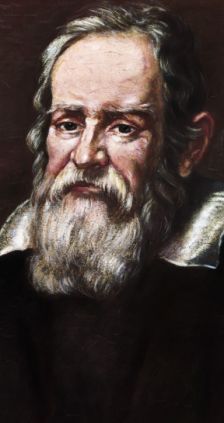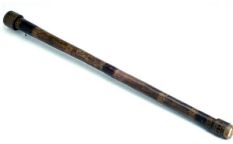The 17th-century drawings that prove a humble Englishman mapped the moon BEFORE Galileo
By Paul Harris
Last updated at 3:22 AM on 15th January 2009For the past four centuries he has been celebrated as the father of modern astronomy.
Galileo peered endlessly through his much-fabled telescope to create detailed charts of the moon - and later to help disprove the rather arrogant belief that our Earth was the centre of the universe.
But the Italian philosopher's claim to fame may owe more to 17th century self-promotion than to historic pioneering, it seems.


Experts believe the 'moon maps' made by Thomas Harriot, right, were drawn using a telescope before Galileo, left, performed the same feat
For a modest and lesser known Englishman has been hailed as the man who mapped the moon. And, incidentally, as the man who gave us the potato.
Thomas Harriot beat Galileo in showing the world what the lunar surface looked like nearly six months before the Italian invited the world to come and see his etchings in December 1609.
Harriot had already drawn and plotted his chart in July that year, dated documents show.
His own telescope was just as powerful as Galileo's, it appears - but his ego was considerably smaller.
So while the Italian reaped the glory for 'discovering' the lunar surface, the Englishman quietly carried on stargazing and charting lunar landscapes.

Composite of the 'Moon maps' drawn by Harriot and issued by West Sussex Record Office

It has been announced that these 'moon maps' will go on display to launch the International Year of Astronomy.
Papers held in archives in West Sussex chronicle Harriot's fascination with the moon and provide crucial evidence that he won the cartography space race all those years ago.
His first drawing is dated July 26, 1609. Galileo, it seems, was still struggling to focus. Astronomer and broadcaster Sir Patrick Moore told the BBC the 1609 drawing was 'a work of art'.
He added: 'Harriot saw the mountains, craters and so-called seas. It really is a wonderful thing. It's better than Galileo's. And it's British.'
Cynics, perhaps, might wonder if Harriot could craftily have backdated his drawings in the hope that his achievements would be recognised in posterity.
But by all accounts, the Englishman just wasn't that sort of chap. Oxford-educated Harriot was independently wealthy and had no wish for fame.
Sir Walter Raleigh recognised his genius and hired him as a maths tutor. Galileo was relatively skint and his quest was for publication and recognition.

The accuracy of Harriot's map, below, can be seen with this image of the moon


An early telescope of the type which may have been used by Harriot
The Sussex connection is through Petworth House and Lord Egremont, who owns the drawings.
The Record Office looks after them on his behalf and is staging an exhibition in Chichester this summer.
West Sussex archivist Alison McCann said: 'I hope the exhibition will raise his profile so he receives due credit for being one of the finest scientists of the early 17th century.'
The exhibition will also incorporate his original drawings of Jupiter's satellites, sun spots and Halley's Comet.
And the potato? Harriot secured one during a 1585 expedition to Virginia and brought it back in July the following year, giving it to Raleigh to plant on his Irish estate.

Source: http://www.dailymail.co.uk/sciencetech/article-1115782/The-17th-century-drawings-prove-humble-Englishman-mapped-moon-BEFORE-Galileo.html
